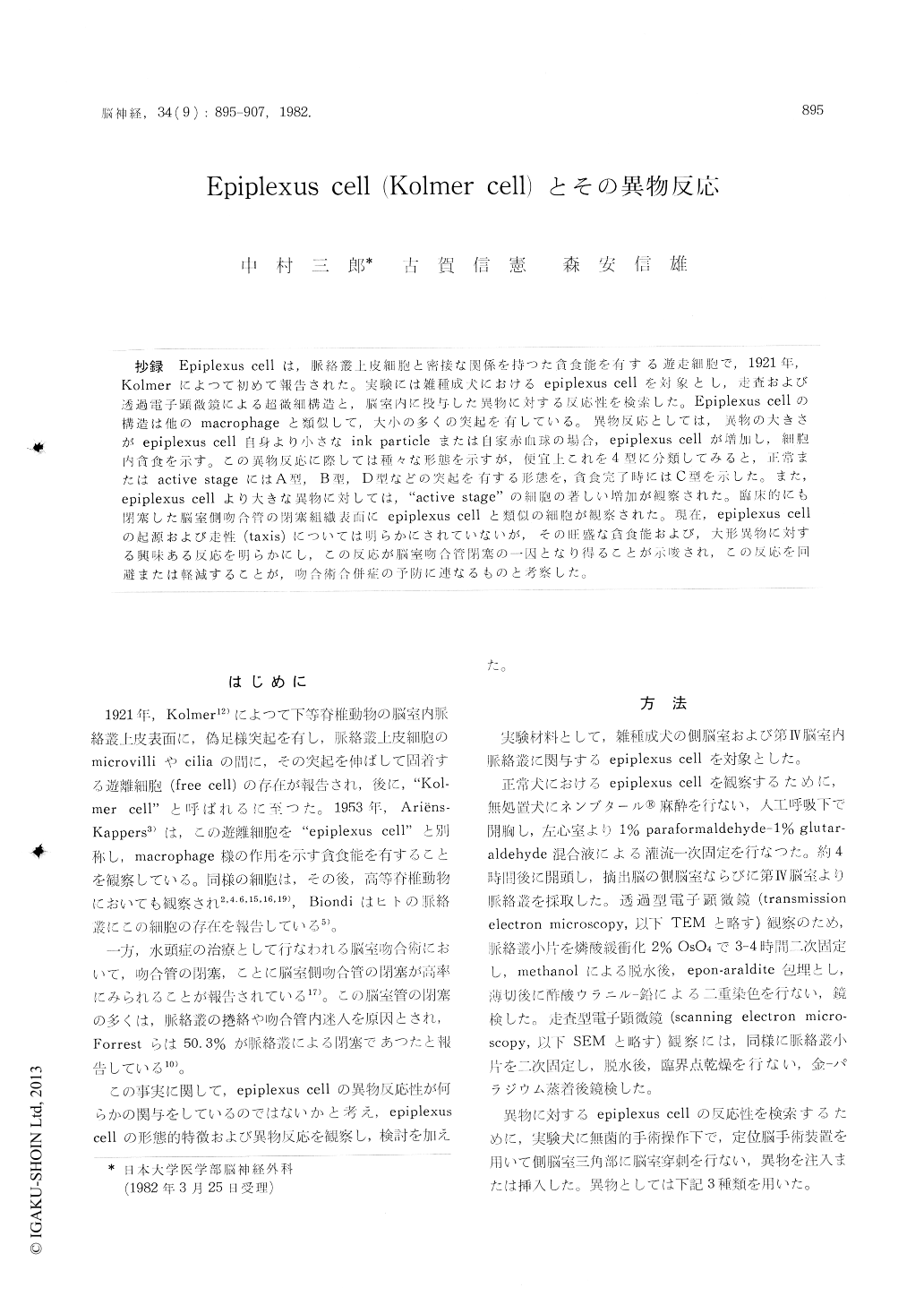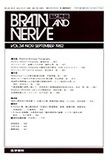Japanese
English
- 有料閲覧
- Abstract 文献概要
- 1ページ目 Look Inside
抄録 Epiplexus cellは,脈絡叢上皮細胞と密接な関係を持つた貪食能を有する遊走細胞で,1921年,Kolmerによつて初めて報告された。実験には雑種成犬におけるepiplexus cellを対象とし,走査および透過電子顕微鏡による超微細構造と,脳室内に投与した翼物に対する反応性を検索した。Epiplexus cellの構造は他のmacrophageと類似して,大小の多くの突起を有している。異物反応としては,異物の大きさがepiplexus cell 自身より小さなink particleまたは自家赤血球の場合, epiplexus cellが増加し,細胞内貪食を示す。この異物反応に際しては種々な形態を示すが,便宜上これを4型に分類してみると,正常またはactive stageにはA型, B型, D型などの突起を有する形態を,貪食完了時にはC型を示した。また,epiplexus cellより大きな異物に対しては,"active stage"の細胞の著しい増加が観察された。臨床的にも閉塞した脳室側吻合管の閉塞組織表面にepiplexus cellと類似の細胞が観察された。現在, epiplexus cellの起源および走性(taxis)については明らかにされていないが,その旺盛な貪食能および,大形異物に対する興味ある反応を明らかにし,この反応が脳室吻合管閉塞の一因となり得ることが示唆され,この反応を回避または軽減することが,吻合術合併症の予防に連なるものと考察した。
In 1921, Kolmer reported the free cell which is characteristically anchoring to the surface of the choroid plexus by its pseudopodal cytoplasmic processes, and later named "Kolmer cell". Pha-gocytic function of this cell was reported by Ariëns-Kappers in 1953, and he called this cell to "epiplexus cell". In this paper, the epiplexuscell of adult dog was studied by transmission electron microscopy (TEM) and scanning electron microscopy (SEM), and its ultrastructure, reactions and changes against foreign bodies are described. Furthermore, obstructed ventricular catheter by choroid plexus in clinical ventricular shunt opera-tion was observed by SEM.
The structure and nature of the epiplexus cell resembles that of macrophages in other tissue. When small foreign bodies such as ink particles or red blood cells were injected into the ventricle, the reaction of the epiplexus cells was observed as an increase in their number and phagocytosis. And against the large foreign bodies, such as small strips of silicon rubber tube, a remarkable increase of the epiplexus cells were seen. These proliferated cells had many long cytoplasmic processes and laid in piles.
In these above-mentioned results, we considered that the proliferative and phagocytic reaction of the epiplexus cell represents one of the causes of ventricle catheter obstruction.

Copyright © 1982, Igaku-Shoin Ltd. All rights reserved.


